A correct, high-quality diet is essential for a thriving, healthy community of tropical fish. But there are so many different types of fish food out there; how do you know what’s best for your fish?
Is a diet of only flake food suitable for tropical fish? High-quality fish food is quite expensive. Is it worth the money, or can my fish get by on cheaper foods?
Read this guide to learn all about tropical fish food options and discover the best tropical fish food on the market today!
Quick Comparisons Of The 9 Best Tropical Fish Foods
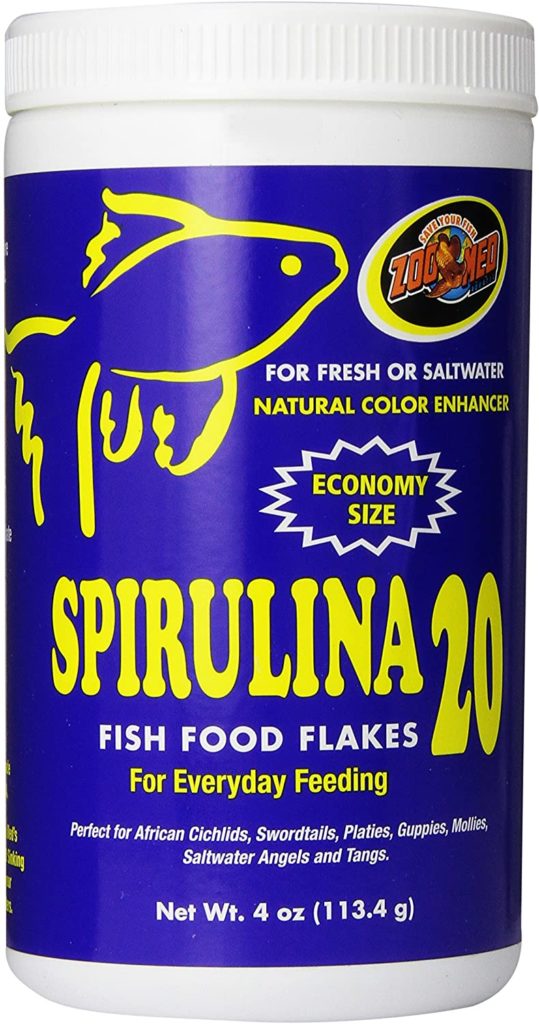
BRAND
Royal Pet Supplies Inc Zoo Med Spirulina 20 Flake Fish Food
DETAILS
- Diet: Herbivore/Omnivore
- Tank region: Top
- Suitable for: All sizes of fish
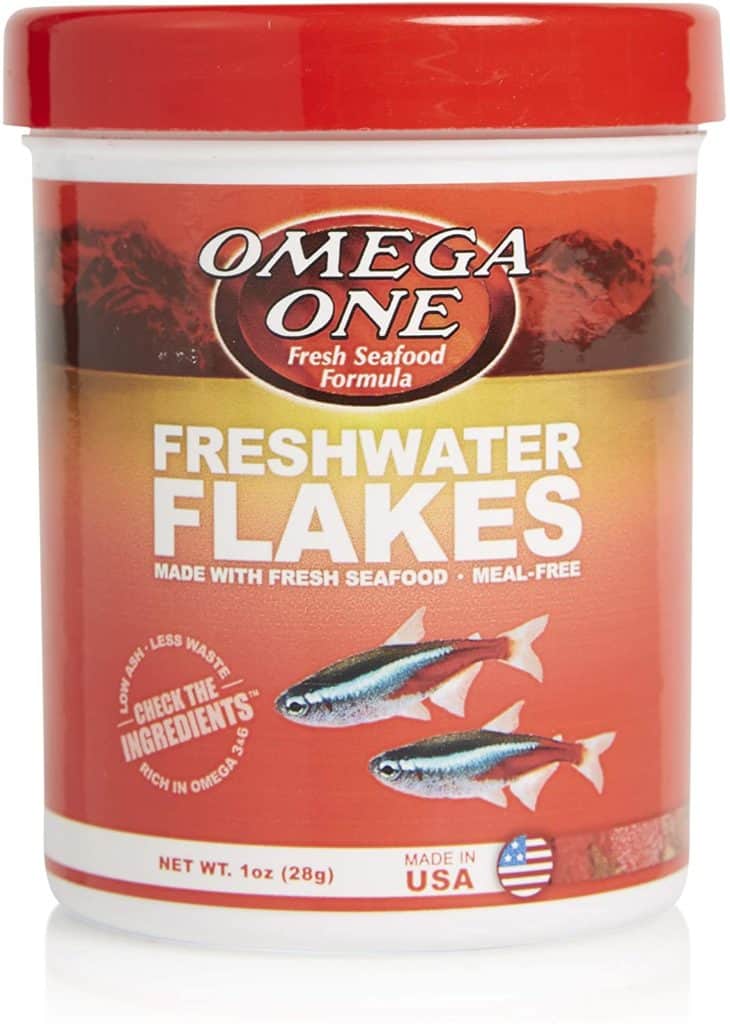
Omega One Freshwater Flakes
- Diet: Omnivore, carnivore
- Tank region: Top and midwater
- Suitable for: Small to medium-sized fish
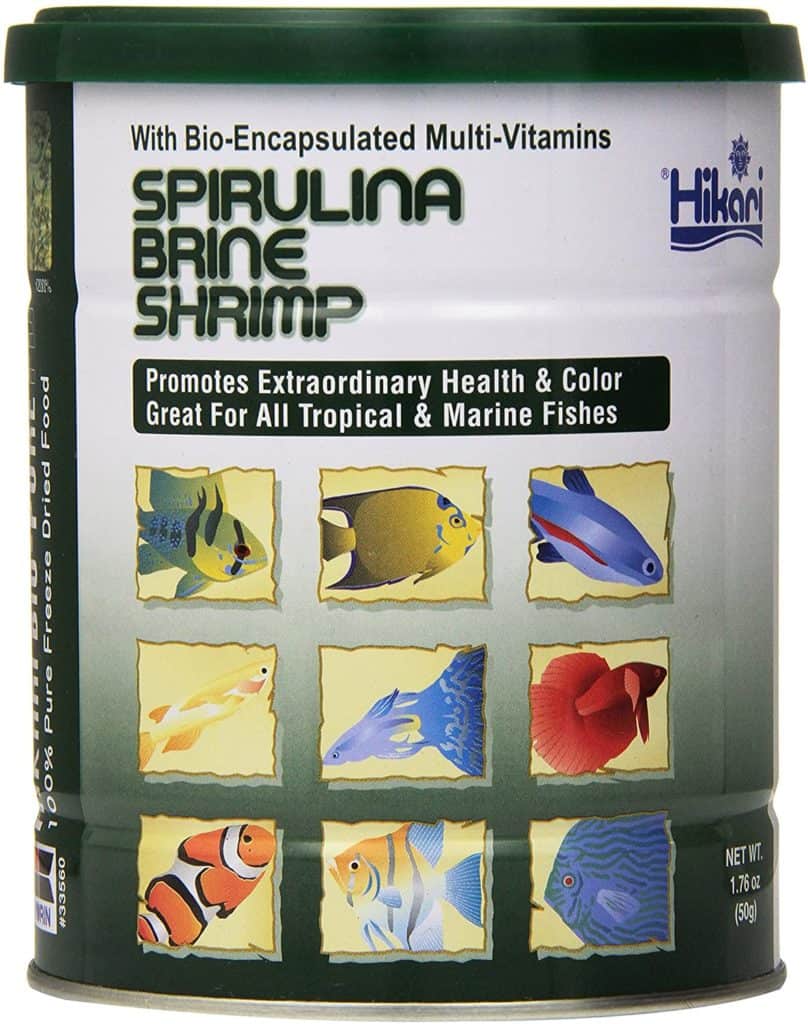
Hikari Bio-Pure Freeze Dried Spirulina Brine Shrimp Cubes
- Diet: Omnivore, carnivore
- Tank region: All areas
- Suitable for: All fish
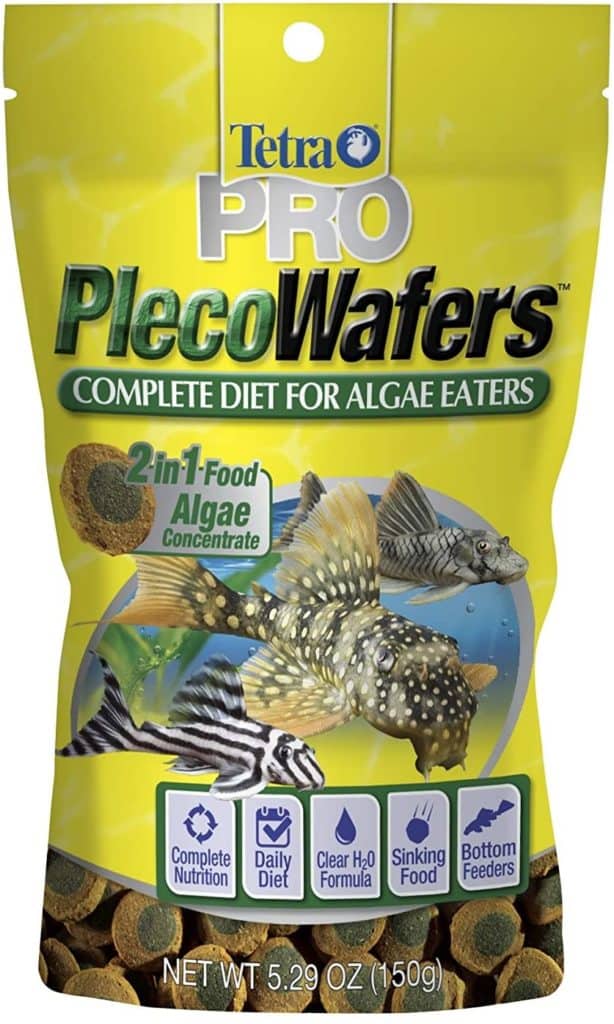
Tetra Algae Wafers
- Diet: Herbivore, omnivore
- Tank region: Bottom
- Suitable for: All sizes of fish
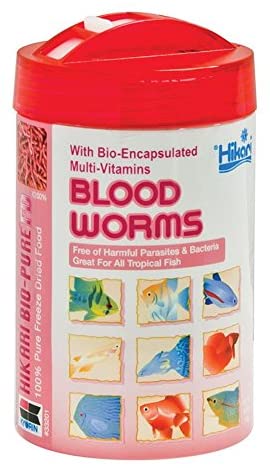
Hikari Bio-Pure FD Blood Worms
- Diet: Omnivore, carnivore
- Tank region: All areas
- Suitable for: Medium and large-sized fish
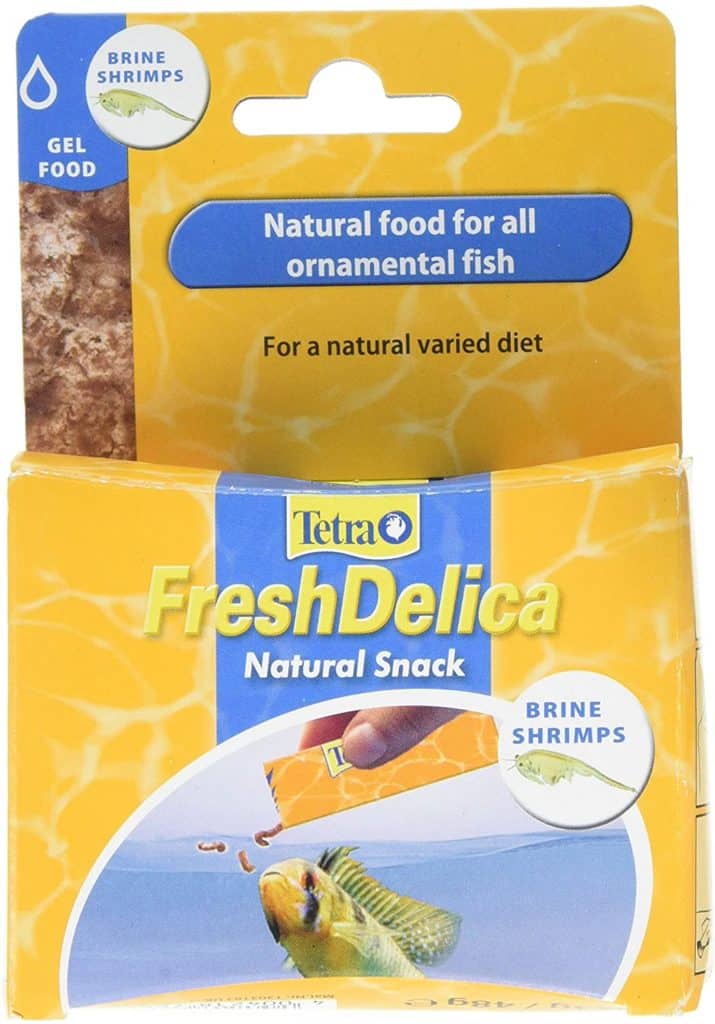
Tetra Freshdelica Brine Shrimp
- Diet: Omnivore, carnivore
- Tank region: All areas
- Suitable for: All fish
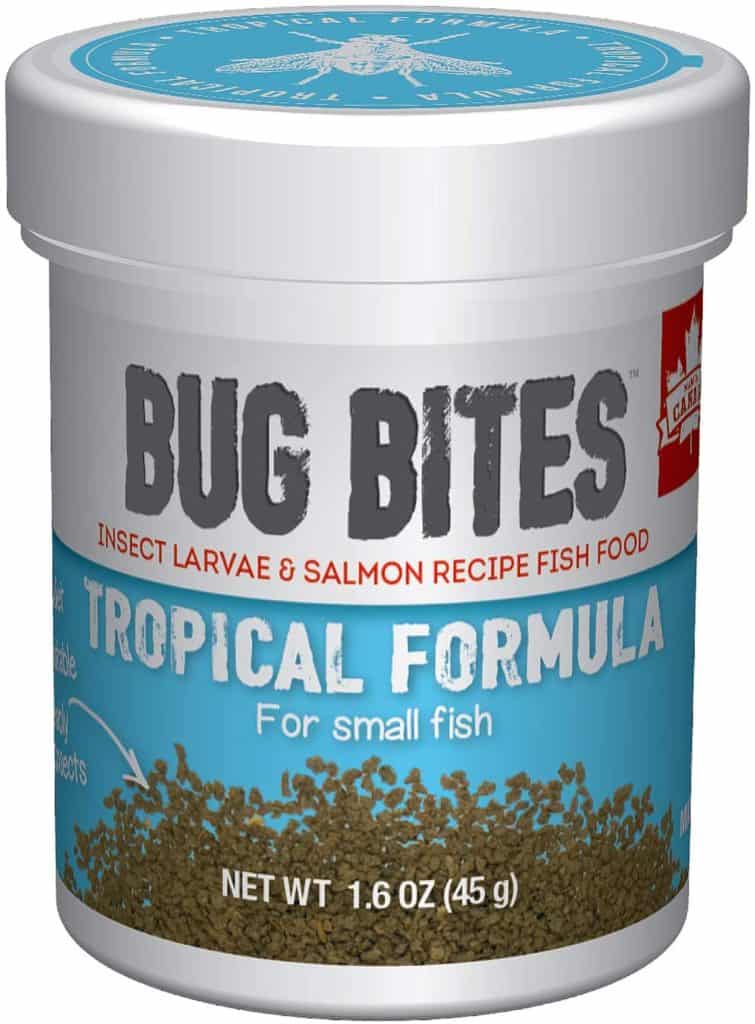
Fluval Bug Bites
- Diet: Omnivore, carnivore
- Tank region: Top to midwater
- Suitable for: Small to medium-sized fish
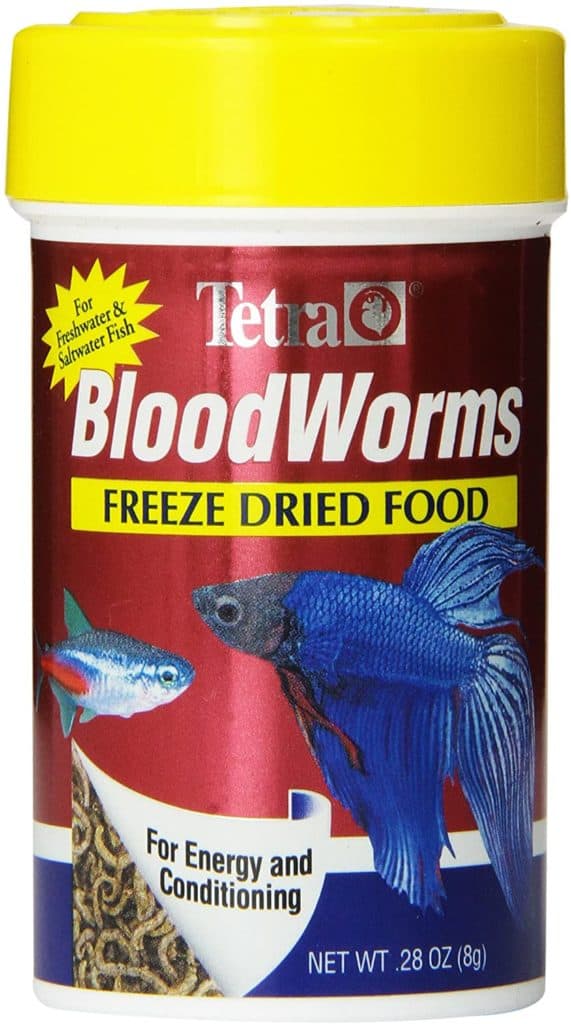
Tetra Freeze-Dried Bloodworms
- Diet: Omnivore, carnivore
- Tank region: Top to midwater
- Suitable for: Small to medium-sized fish
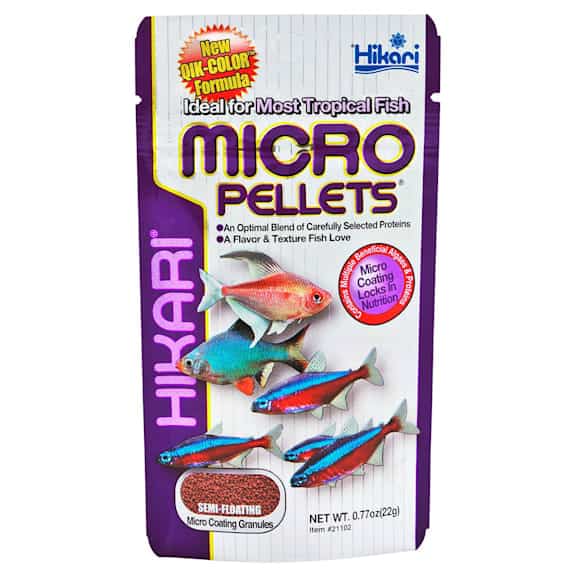
Hikari Tropical Micro Pellets
- Diet: Omnivore, carnivore
- Tank region: Top to midwater
- Suitable for: Small to medium-sized fish
Do Fish Have Taste Buds?
When choosing food for your fish, you’re probably wondering if your fishy friends can even taste that expensive food you bought them. Well, yes, fish do have taste buds just like you do.
A fish’s tastebuds enable the fish to differentiate between salty, sour, bitter, and sweet foods. The taste buds in fish are found inside its mouth, on the tongue, and even on the fins and the outside of the creature’s body.
Look at bottom-dwelling fish such as catfish. You’ll see that these fish have small tentacles on their heads called barbels. Those sensitive barbels also contain taste buds.
How To Feed Tropical Fish
When feeding your fish, the most important thing to remember is not to overfeed them.
I recommend that you feed your fish two or three times per day, offering only what the fish will eat within a few minutes. If you’re not around to do that, invest in an automatic feeder. These devices can be set to dispense rations of food at preset times.
If you have nocturnal fish species, feed them just before lights out and first thing in the morning before the lights come on.
Species such as bettas and goldfish can benefit from one “fasting” day per week. That allows any food still in the fish’s gut to be processed, preventing constipation and associated swim bladder problems.
Bottom Feeders and Surface Feeders
Some fish species, such as catfish, are primarily bottom feeders. So, you need to make sure that they get plenty to eat by feeding foods like wafers that sink down onto the substrate.
At the other end of the scale, surface-feeding fish species, including bettas and other members of the gourami family, need to be offered floating pellets so that they can eat their fill before the food sinks out of reach.
A Varied Diet Is Crucial For Fish Health
In nature, most fish species eat a varied diet, so you need to replicate that in the captive environment.
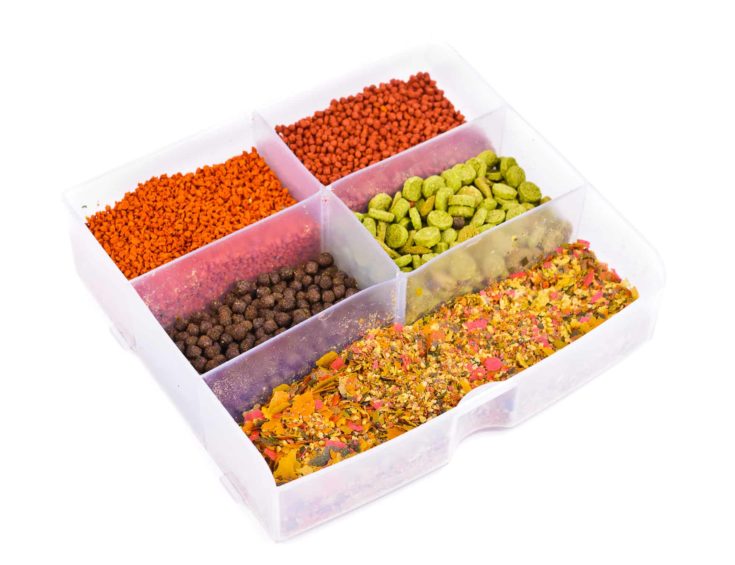
Variety not only keeps the fish’s diet interesting, but it also helps to prevent health problems and nutritional deficiency that can occur if you only feed one type of food.
For example, if you only feed round-bodied Fancy goldfish dry food, they’re at risk of developing digestive problems and associated Swim Bladder Disorders.
Why You Should Avoid Overfeeding Your Fish
Although some fish species are notoriously greedy and will gobble up as much food as you’re prepared to give them, overfeeding is not good for your fish.
Here’s why:
Cloudy, Dirty Water
Uneaten food decomposes in the substrate, eventually causing the water to turn cloudy and become polluted.
Algae Growth
Overfeeding is the number one cause of excessive algae growth in ponds and fish tanks. When fish are overfed, large quantities of dissolved nitrates, organic material, and phosphates accumulate in the water encouraging algae to bloom.
Low Oxygen Levels
When uneaten food and fish waste decomposes, the process uses oxygen and produces CO2. That aerobic mechanism means that there’s less oxygen in the water for the fish to use.
Mold and Fungus
As with algae, mold and fungus will grow when there is an excessive amount of organic material in the water. So, if you notice cottony, white fluffy growth on your substrate or plants, that’s an indicator that you may be overfeeding your fish.
Planaria Worms
If you spot a few tiny white or tan-colored worms crawling up your aquarium glass, that’s a good sign that your water quality is not great.
Although these creatures won’t harm your fish, they’re often present in tanks where overfeeding is an issue, and they will sometimes eat fish eggs.
Blocked Filter Media
Your filtration system is designed to extract waste products from the water and process them into less harmful substances so that the environment is safe for your fish.
However, overfeeding causes excess waste to collect on the filter media, clogging the filters so that they don’t function efficiently. That means that the water flow through the aquarium is reduced, and the water quickly starts to become dirty and toxic.
High Ammonia and Nitrites
When fish waste and uneaten food break down, they release ammonia and nitrites, both of which are highly toxic to your fish. Although your filter system processes those chemicals, if you overfeed your fish, you risk overloading the filter and poisoning the water.
Low pH Levels
Decomposing organic material reduces the amount of oxygen in the water and also lowers the pH since acids are produced as part of the process.
Every fish species has a preferred pH range, and those that need a more alkaline environment will be stressed if the pH is out. Stress is extremely bad news for fish, as it lowers their immune system, leaving the creatures vulnerable to diseases and parasite infections.
How To Choose High-Quality Tropical Fish Food
When it comes to choosing high-quality tropical fish food, there are certain things to look out for and certain things to avoid.
Ingredients You Want
The ingredients you want to see in your fish food depend to an extent on the species of fish you’re feeding and on whether the fish are herbivores, omnivores, or carnivores. The ingredients used in the food will vary depending on the fish species the food is formulated for and on its quality. That said, all commercially prepared fish food has the same basic formula:
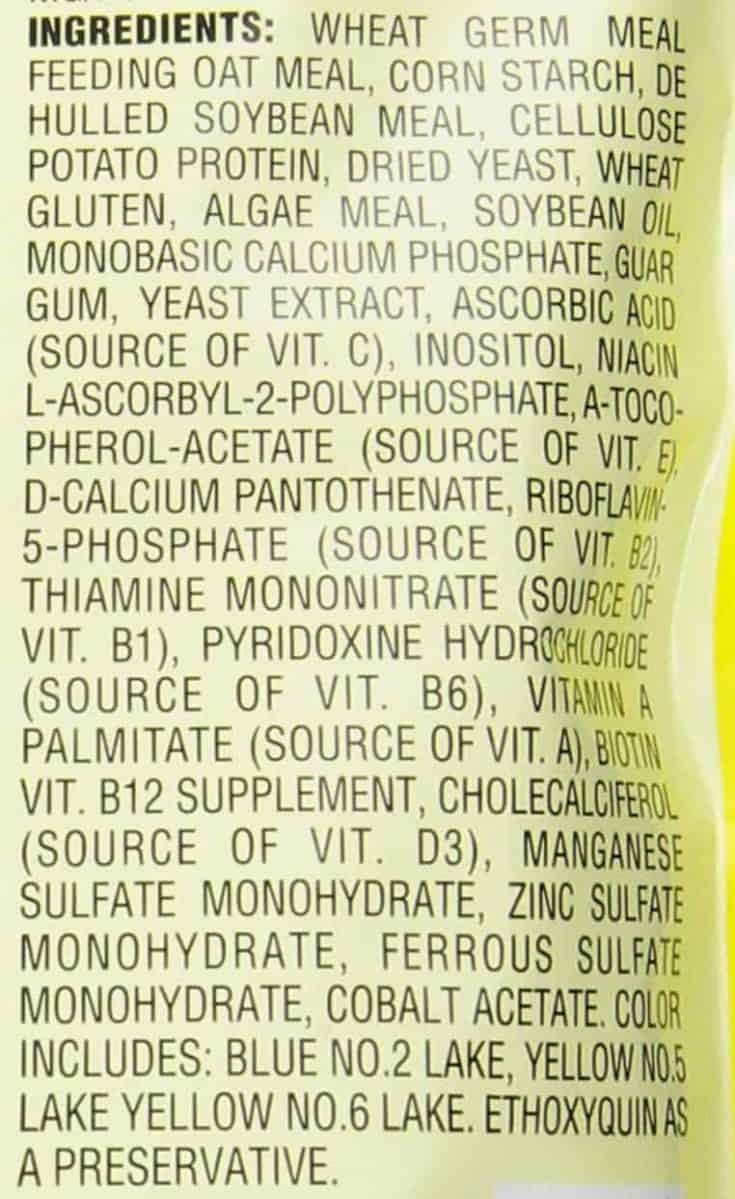
- Protein (amino acids)
- Fats (lipids)
- Carbohydrates
Vitamins and minerals are also added, typically including:
- Vitamins B, C, and E
- Riboflavin
- Niacin
- Biotin
- Zinc
- Manganese
So, when you’re checking out what’s in the fish food, look for these ingredients:
- Whole fish
- Algae meal
- Spirulina a form of algae that’s rich in protein, vitamins, and minerals
- Krill
- Squid meal
- Black soldier fly larvae
- Earthworms
- Black worms
One or more of these ingredients should be the first listed on the product packaging.
Ingredients To Avoid
Ingredients that you don’t want to see in fish food are essentially starchy fillers that are used to bulk up the product, including:
- Soybean meal
- Wheat flour
- Sorbitol
- Potato protein
All these carbohydrates are fine in small amounts and won’t harm your fish, but these ingredients don’t offer much nutritional value.
Low-Quality Fish Meal
There are two types of fish meal that are used for fish food. High-quality fish meal is derived from whole fish that aren’t considered fit for human consumption but are great as animal feed because they’re rich in Omega-3 and protein.
You also have a low-quality fish meal, which is basically all the leftovers such as skin, bones, scales, etc. This “garbage” is ground up and used to create an inferior quality fish meal. Unfortunately, it’s difficult to know whether the fish food contains low or high-quality fish meal. However, if the fish meal used is the good stuff, the ingredient is usually listed as “whole fish meal” or names the fish species used.
Legumes and Terrestrial Grains
As previously mentioned, many fish foods contain wheat, soy, and other grains. These ingredients are not easily digestible for fish and generally end up in the water column as pollutants.
Ideally, you don’t want to see grains or legumes in the top three ingredients listed on the packaging.
Different Types of Fish Foods
There are many different types of fish foods to choose from.
Flakes
Flakes are ideal for feeding mid-water and surface-feeding fish. Fish flakes are made from dehydrated ground ingredients that are spread paper-thin and then baked. As the flakes become waterlogged, they sink to the bottom, where fish that inhabit that region can eat them.
Pellets
Pellets are tiny balls or sticks of dehydrated fish food. Pellets come in different sizes to suit various fish species and can be sinking or floating.
Sinking Wafers
Wafers are disks of dry food that are formulated to sink to the bottom. These foods are perfect for plecos, catfish, and other bottom-dwellers. Wafers are often advertised as “algae” wafers; however, they often don’t contain much algae and are generally poor quality.
Gel Foods
Gels can come in a powder that you mix with hot water to create a stiff Jelly-like substance. You can also buy ready-made gel in small plastic tubes that you simply squeeze into the tank.
Gels are quite pricey, but fish love them as a treat.
Freeze-Dried Foods
Freeze-dried foods usually consist of bloodworms, brine shrimp, and the like. These foods make an excellent source of meaty protein.
Frozen Foods
Frozen foods are meaty proteins such as bloodworms, daphnia, mosquito larvae, brine shrimp, etc. that have been flash-frozen into convenient cubes. Thaw the frozen cubes in a little bit of tank water, and then feed it to your fish.
Live Foods
Live foods such as bloodworms, daphnia, and brine shrimp are loved by fish, especially predatory species that are natural-born hunters. You can also buy “feeder fish” such as minnows, goldfish, or guppies that some hobbyists feed to large predatory species.
However, I prefer to give my fish frozen food rather than live foods. The main issue with live food is that it often comes with unwanted extras in the form of bacteria and parasites that could harm your fish.
Top 9 Tropical Fish Food Reviews
Here are nine of the best tropical fish foods currently available on the market.
We haven’t included any frozen fish foods in this list as they’re not generally sold online, purely for practical and logistical reasons. However, most good fish and pet stores will carry a good range of frozen products.
Click the handy in-text links to read the full product specifications and order the ideal food for your fish!
1. Royal Pet Supplies Inc Zoo Med Spirulina 20 Flake Fish Food

- Diet: Herbivore/Omnivore
- Tank region: Top
- Suitable for: All sizes of fish
Zoo Med Spirulina 20 is a premium-quality flake fish food that’s specially formulated for herbivorous or omnivorous fish.
This is a high-quality fish food that contains plankton meal, krill, and spirulina. The food is carefully balanced to help bring out your fishes’ colors, especially greens and blues. A major plus point is that the food includes salmon meal rather than generic fish meal.
The only negative is that the food contains quite a lot of soy flour. That said, the food otherwise makes an excellent staple diet.
PROS
- Contains salmon meal
- Excellent color-enhancing qualities
- Large flakes can be crushed to suit smaller species
CONS
- Soy flour is close to the top of the ingredients list
2. Omega One Freshwater Flakes

- Diet: Omnivore, carnivore
- Tank region: Top and midwater
- Suitable for: Small to medium-sized fish
Omega One contains high-quality meaty proteins, including herring, salmon, halibut, cod, kelp, and whole shrimp. In combination, these ingredients in a carefully balanced formula can beautifully enhance your fishes’ colors.
I have some very fussy feeders in my collection, and even they never turn this food down!
The main downside here is that the food does contain some grains and legumes, although in tiny quantities.
PROS
- Contains proteins from whole fish
- Natural color-enhancing qualities
- Excellent for fussy feeders
CONS
- Contains a minimal amount of legumes and grains
3. Hikari Bio-Pure Freeze Dried Spirulina Brine Shrimp Cubes

- Diet: Omnivore, carnivore
- Tank region: All areas
- Suitable for: All fish
I love this food! The food contains no padding or fillers; it’s simply freeze-dried brine shrimp with spirulina.
Although you can’t feed your fish exclusively on this food, as that wouldn’t constitute a balanced diet, these freeze-dried cubes of yumminess are a perfect dietary supplement.
You can either crumble the cubes into the water or simply press one against the glass where the fish will come along and nibble on the food.
PROS
- Makes a super-tasty treat for fish
- Contains no fillers or padding
- Pure protein
CONS
- Can create a mess in the aquarium
4. Tetra Algae Wafers

- Diet: Herbivore, omnivore
- Tank region: Bottom
- Suitable for: All sizes of fish
Tetra is a renowned manufacturer of fish food and other fishkeeping products. These algae wafers are formulated to offer balanced nutrition for herbivorous bottom-feeders such as Plecos.
These sinking wafers have a vegetable-enriched staple food outer, surrounding a concentrated algae center, and the wafers are designed to sink immediately. The food also contains vitamins and other nutrients to help support your fishes’ immune system.
PROS
- Perfect for bottom-feeding fish species
- Contains algae and added vitamins
- Will not cloud the water
CONS
- Contains some fillers
5. Hikari Bio-Pure FD Blood Worms

- Diet: Omnivore, carnivore
- Tank region: All areas
- Suitable for: Medium and large-sized fish
This food contains freeze-dried bloodworm and added vitamins E, C, B1, B2, B6, and B12. And that’s it!
When it comes to pure, filler-free fish food, you can’t get much better than this offering from the high-quality fish food manufacturer Hikari. The bloodworms used to create the food are specially treated before being processed, so you can be confident that no bacteria or parasites are included!
PROS
- Excellent source of meaty protein
- Contains added multi-vitamins
- Will not cloud the water
CONS
- Suitable as a treat only, not as a complete diet
6. Tetra Freshdelica Brine Shrimp

- Diet: Omnivore, carnivore
- Tank region: All areas
- Suitable for: All fish
This gel food comes in handy sachets. Simply squeeze the sachet to dispense a small amount of food into the water and watch your fish go crazy!
The food contains a very high percentage of brine shrimp suspended in an appetizing, vitamin-enriched gel. Although it’s quite expensive when compared to fish flakes and frozen foods, the gel has a two-year shelf life, and you don’t need to touch the food during feeding.
This fish food makes an excellent treat when fed two to three times a week but you do need to supplement it with a basic, staple diet such as high-quality fish flakes.
PROS
- Excellent source of meaty protein
- No added preservatives
- 2-year shelf-life
CONS
- Quite expensive but makes a delicious treat
7. Fluval Bug Bites

- Diet: Omnivore, carnivore
- Tank region: Top to midwater
- Suitable for: Small to medium-sized fish
Fluval makes a range of insect larvae-based Bug Bites, including specific formulas for goldfish, cichlids, and plecos.
This version is the generic tropical fish recipe and contains up to 40% Black Soldier Fly larvae as the primary ingredient and also includes whole salmon at the top end of the ingredients list. The food is further enhanced by the addition of essential multivitamins, minerals, and vitamins and can be used as a balanced daily diet for your fish.
These small pellets or granules are aimed at small to medium-sized fish, and there’s a larger pellet version of the food available that’s suitable for large species. The granules float briefly on the water surface before slowly sinking so that fish at all levels can grab them.
The food is made in small batches to ensure consistent quality and maximum freshness and contains no artificial colors, preservatives, or fillers.
PROS
- Excellent source of meaty protein
- No added artificial preservatives, colors, or fillers
- Range of products available to suit different fish species
CONS
- Ingredients list includes peas, wheat, and potatoes
8. Tetra Freeze-Dried Bloodworms

- Diet: Omnivore, carnivore
- Tank region: Top to midwater
- Suitable for: Small to medium-sized fish
A tub of Tetra freeze-dried bloodworms contains exactly that – bloodworms!
This food is ideal as a treat for your fish, but you can’t use it as a complete diet, so you need to feed your fish some flakes, pellets, or wafers too.
The bloodworms are processed to ensure that bacteria or harmful pathogens are removed, and fish of all sizes can enjoy them. Bettas love this food! The worms float on the water surface, where the fish can easily grab them.
PROS
- Excellent source of meaty protein
- No added artificial preservatives, colors, or fillers
- Contains no bacteria, parasites, or pathogens
CONS
- Only suitable as an occasional treat, not a complete diet
9. Hikari Tropical Micro Pellets

- Diet: Omnivore, carnivore
- Tank region: Top to midwater
- Suitable for: Small to medium-sized fish
If you keep very small fish species such as tetras, rasboras, and the like, these micro-pellets from fish food giants, Hikari, are the perfect choice of high-quality fish food for your pets.
The carefully balanced formula features a mix of premium marine and vegetable proteins, while krill and spirulina provide natural color-enhancers to bring out your fishes’ brightest colors. The pellets are soft in texture to promote excellent digestibility and encourage picky eaters.
The pellets are semi-floating, ensuring that fish at all levels of the water column are catered for. To prevent water clouding and nutrient loss, every pellet is micro-coated.
The main downside to the pellets is that their tiny size can lead to clogging of the filter media if the food isn’t eaten quickly in a tank where the circulation is very powerful.
PROS
- Suitable for use in automatic fish feeders
- Perfect for very small fish
- Does not cloud water
CONS
- Tiny granules can clog filters if not eaten quickly
In Conclusion
I hope you enjoyed our guide to tropical fish foods and found the reviews helpful that we’ve provided for you. Please share the article if you loved it!
I don’t have a particular single favorite of the foods that we’ve reviewed here. That’s because I feed my fish a range of flakes, frozen, pelleted, and freeze-dried foods so that they enjoy a varied, balanced diet.
When choosing fish food for your pets, look for products that don’t contain too many starchy fillers and have a high percentage of whole fish protein or spirulina if you have herbivorous fish.